43 nutritional information food labels
Calories on the Menu | FDA Calorie labeling on menus can help you make informed and healthful decisions about meals and snacks. So, beginning May 7, 2018, calories will be listed on many menus and menu boards of restaurants... Reading Nutrition Facts Labels | Magaram Center Nutrition ... Under "Total Carbohydrates", the updated nutrition labels will include grams of "added sugars" in addition to grams of "total sugars". Foods high in added sugar will likely be high in calories while being of little nutritional value to our diets. Less than 10% of our daily calories should be from added sugars. 1. Dial Column Labels.
How To Read Food Labels: Understanding the Basics - Instacart The nutrition facts table is usually found on the rear or the side of the label. This is perhaps the most useful part of a food label, providing a detailed breakdown of the product's nutritional content, including calories, protein, carbohydrates, fat, and more. 1. Beware of misleading claims

Nutritional information food labels
How nutrition labels work: 7 tips for demystifying foods ... Proteins include animal sources (meat, fish, dairy and eggs) and nonanimal sources (soy, nuts, seeds and legumes). Lean meats are typically better for you than processed or high fat, but it depends on your dietary goals. 2. Increase fiber. Heavily processed foods usually remove fiber. Increasing your fiber intake is typically a good thing. 3. What Food Labels Tell You | Smokefree If you want to take in less of a nutrient such as fat or sodium, choose foods with a lower % DV—5 percent or less. If you want to take in more of a nutrient such as fiber, pick foods with a higher % DV—20 percent or more. The information on a Nutrition Facts label is based on 2,000 calories a day. You may need to eat less or more than 2,000 ... How To Read Food and Beverage Labels | National Institute ... Although frozen and canned fruits and vegetables have food labels, fresh varieties often do not. You can find nutrition information for fresh vegetables and fruits on the USDA website. Or you can call the U.S. Department of Agriculture's Food and Nutrition Information Center at 301-504-5414. Understanding percent Daily Value (% DV)
Nutritional information food labels. How to understand food nutrition labels | by Alpha Medical ... Food labels list ingredients at the bottom of the nutrition tables. These are usually ordered starting with the ingredient contained in the highest amount. At the bottom of the ingredients list,... New Findings on Online Food Labels 2022 Potential allergens were stated on only 11.4 percent of products. Nutrition Facts and ingredient lists were listed about half the time. Health- and nutrition-related claims such as "low sodium ... Nutrition Facts Label | Cigna Serving sizes of similar foods are the same on all Nutrition Facts labels, to make comparing foods easier. There may be more than 1 serving in each container. This can make a difference when you are watching your calories and nutrients. *The % Daily Value is based on 2,000 calories a day. You may need more or less than 2,000 calories a day. Food Labeling & Nutrition | FDA Food labeling is required for most prepared foods, such as breads, cereals, canned and frozen foods, snacks, desserts, drinks, etc. Nutrition labeling for raw produce (fruits and vegetables) and...
Nutrition labels: Finding out about the food you eat All information on the nutrition label is based on a specific amount of food, referred to as the serving size. The serving size allows you to: understand how much of a nutrient you are eating. compare nutrients and calories between two similar food products. compare the serving size on the package to the amount that you eat. How to Read and Interpret Nutrition Labels - Cecelia Health These include: corn syrup, corn sweetener, cane sugar, other syrups, cane juice, fructose, juice, evaporated sugar, maltodextrin, stevia, malt, molasses. Don't fall for the buzzwords Packaging labels try to lure consumers into purchasing products by making health claims that are often false or misleading. How to Understand and Use the Nutrition Facts Label | FDA Dietary fiber, vitamin D, calcium, iron ad potassium are nutrients on the label that Americans generally do not get the recommended amount of. They are identified as nutrients to get more of.... Food Literacy | Health Literacy | CDC used eye-tracking glasses to measure adults' visual attention to the nutritional information of food products during a food selection task. Front labels used a familiar red, yellow, and green sign and there was a sign with explanatory information near the product. Back labels were the usual nutrition label.
What's New with the Nutrition Facts Label | FDA Use the label to support your personal dietary needs—choose foods that contain more of the nutrients you want to get more of and less of nutrients you may want to limit. More often, choose foods... Learn How the Nutrition Facts Label Can Help You Improve ... Nutrients Required on Label Vitamin D and potassium values are required. Calcium and iron will continue to be required. Vitamins A and C will no longer be required but can be included on a voluntary basis. Slight Decrease in Sodium Allowance The daily limit for sodium decreased slightly from 2,400 mg per day to 2,300 mg per day. Nutrition Facts: How to Read Nutrition Labels The Food and Drug Administration (FDA) regulates terms used on food labels. Here are some to look for: Calorie-free: Less than 5 calories per serving. Low calorie: 40 calories or less per serving ... How to Read Nutrition Facts Label | Food Network Healthy ... If 1 serving of a food has 120 mg of sodium, it can technically be labeled as a "low sodium" food. However, if you eat 3 servings, triple that number, and now you're consuming 360 mg of sodium,...
Using the Nutrition Facts Label and MyPlate to Make ... You can use the Nutrition Facts label to monitor calories and nutrients in packaged foods and drinks and more often choose items higher in dietary fiber, vitamin D, calcium, iron, and potassium and...
Nutrition Facts Label - IFT.org The Nutrition Facts Label, also referred to as the Nutrition Facts Panel, on packaged food and beverage products is intended to help consumers make informed food choices that contribute to a healthy diet. The first Nutrition Facts Label regulations were published in 1993 and launched in 1994.
How to Read Food Labels Like a Nutritionist | HUM ... Step 1: Be Wary of Claims. Look at food labels like you're reviewing a potential paramour's online-dating profile. In other words, be skeptical of baiting phrases. (Think terms like "cholesterol free" and "natural.") Studies have shown that consumers are more likely to buy products with health claims, but the truth is that many of ...
Help patients understand Nutrition Facts labels to eat ... This video provides a general overview of the four key sections of the Nutrition Facts label: servings, calories, percent Daily Value and nutrients. The video offers practical guidance for patients on how to use the Nutrition Facts label to compare packaged foods and beverages and make informed dietary choices.
How to Read a Nutrition Label, According to Registered ... A quick word of caution: The nutrition label is based on a 2,000-calorie diet, and you might need to eat additional or fewer calories based on your unique needs. Regardless, the nutrition facts label can still be useful, as long as you take it with a grain of salt, says Whitney English, M.S., R.D.N. , a registered dietitian nutritionist and the ...
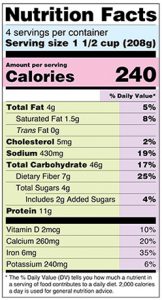
2.6 – Discovering the Nutrition Facts Food Label – Nutrition 100 Nutritional Applications for a ...
Calories on the New Nutrition Facts Label | FDA One package of food may contain more than one serving, so, if you eat two servings you would be getting two times the calories shown on the label. For example, if you ate one serving of the food...
The Basics of the Nutrition Facts Label The following is a quick guide to reading the Nutrition Facts label. Step 1: Start with the Serving Size Look here for both the serving size (the amount people typically eat at one time) and the number of servings in the package. Compare your portion size (the amount you actually eat) to the serving size listed on the panel.
What To Look For On Nutrition Labels & Why It Matters Our calories are virtually the same as is the amount of protein. Of course with a protein powder, looking for the most amount of protein is what gives you that desired muscle growth and enhanced recovery. Next is to look at the amount of carbs and fat. Both these products have 2 grams of carbs which isn't anything crazy in the grand scheme of ...
Reading food labels: Tips if you have diabetes - Mayo Clinic Sample Nutrition Facts label. Serving size: Serving sizes are listed in standard measurements, such as cups or pieces. Similar foods usually have similar serving sizes, so you can compare them more easily. The label also includes the number of servings per container to help you calculate the calories and nutrients in the entire package.
How Do You Know Your Food's Nutrition Facts Label Is ... NIST's measurements are accurate to within 2% to 5% for nutrient elements (such as sodium, calcium and potassium), macronutrients (fats, proteins and carbohydrates), amino acids and fatty acids. As you may have noticed, most of your favorite food items have recently updated their nutrition facts labels.
How to Read Nutrition Labels Instead, eat more dietary fiber, vitamin D, calcium, iron, potassium, protein, and select carbohydrates like whole-grain breads, rice, and vegetables. Use the percent daily value (%DV) as a tool to see if there's too much or too little of a specific nutrient. Less than 5% is considered too little, and more than 15% is a lot.
How To Read Food and Beverage Labels | National Institute ... Although frozen and canned fruits and vegetables have food labels, fresh varieties often do not. You can find nutrition information for fresh vegetables and fruits on the USDA website. Or you can call the U.S. Department of Agriculture's Food and Nutrition Information Center at 301-504-5414. Understanding percent Daily Value (% DV)
What Food Labels Tell You | Smokefree If you want to take in less of a nutrient such as fat or sodium, choose foods with a lower % DV—5 percent or less. If you want to take in more of a nutrient such as fiber, pick foods with a higher % DV—20 percent or more. The information on a Nutrition Facts label is based on 2,000 calories a day. You may need to eat less or more than 2,000 ...
How nutrition labels work: 7 tips for demystifying foods ... Proteins include animal sources (meat, fish, dairy and eggs) and nonanimal sources (soy, nuts, seeds and legumes). Lean meats are typically better for you than processed or high fat, but it depends on your dietary goals. 2. Increase fiber. Heavily processed foods usually remove fiber. Increasing your fiber intake is typically a good thing. 3.
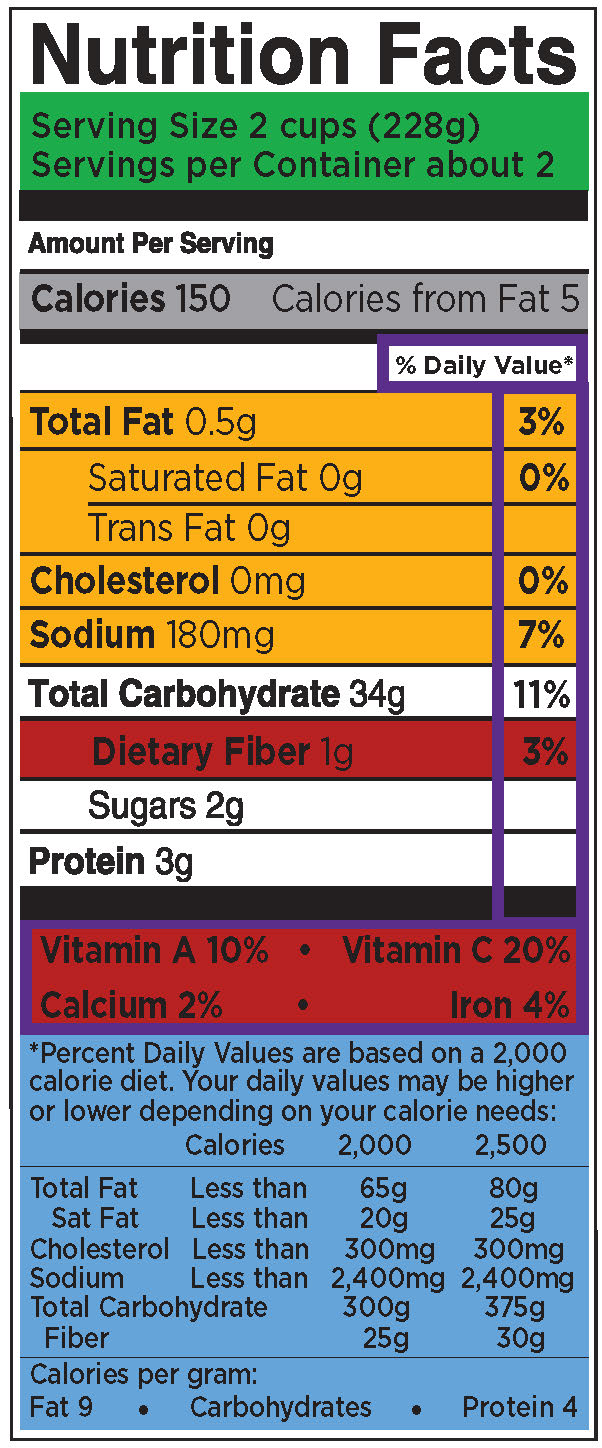
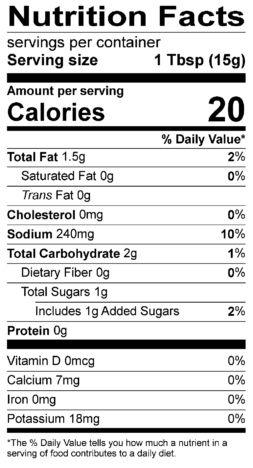


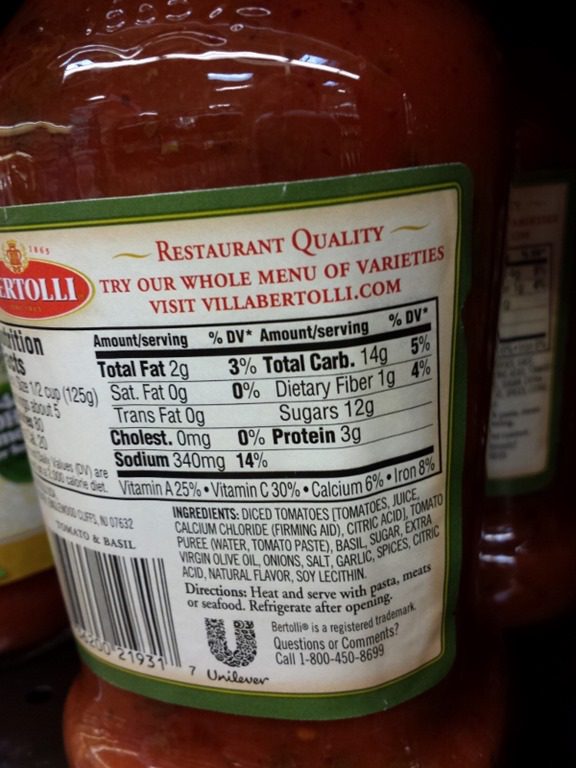

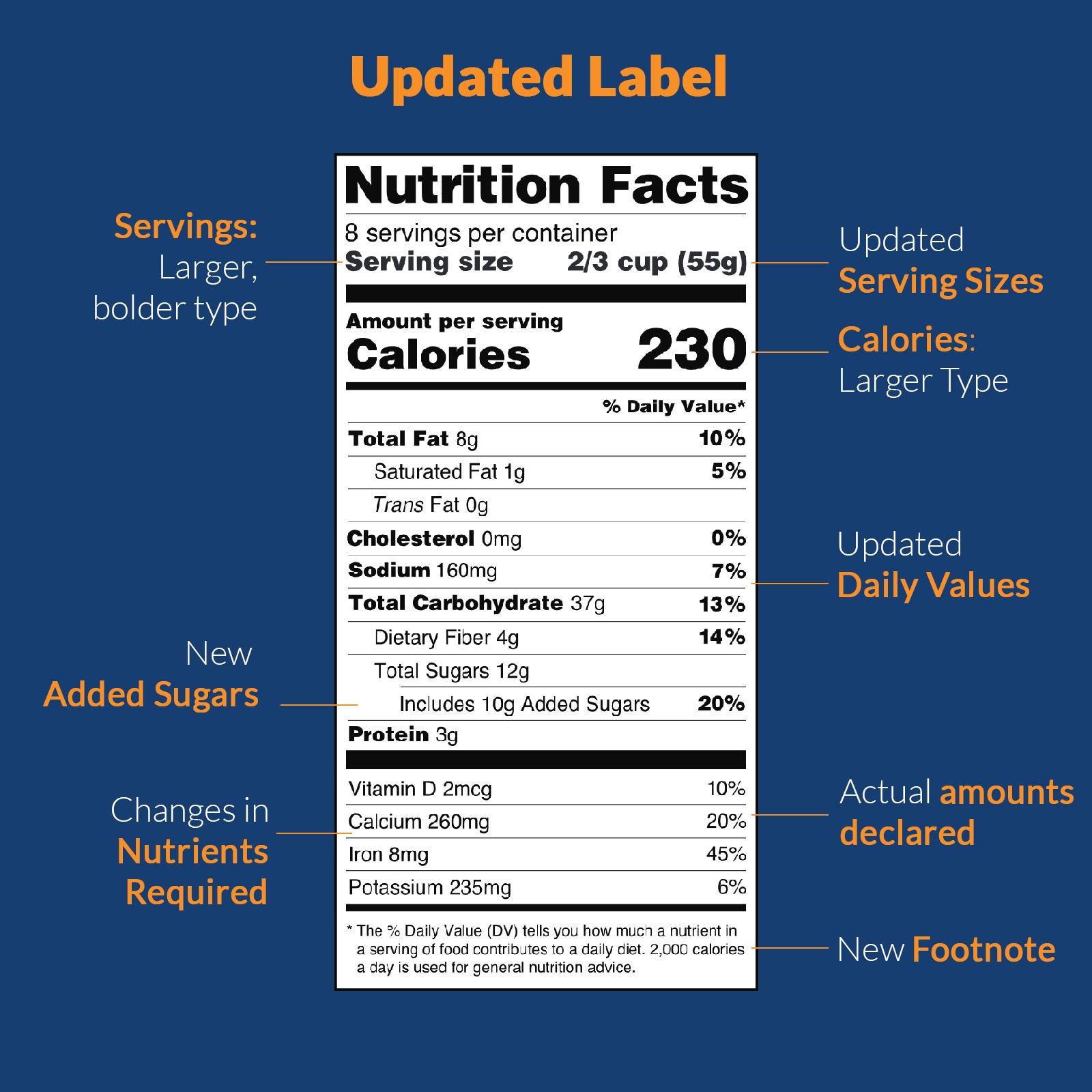


Post a Comment for "43 nutritional information food labels"